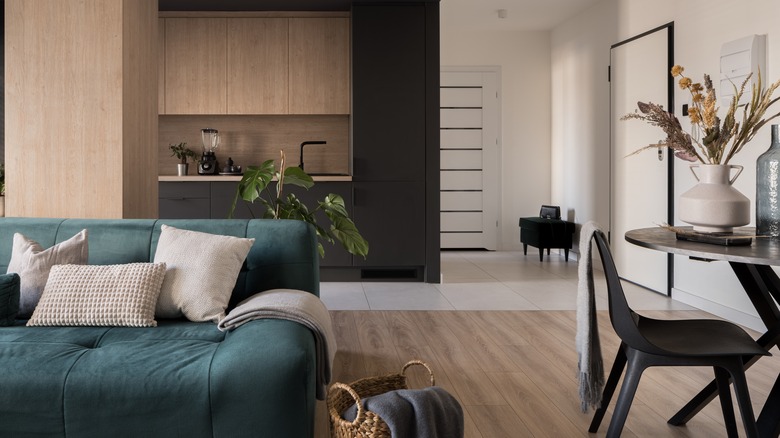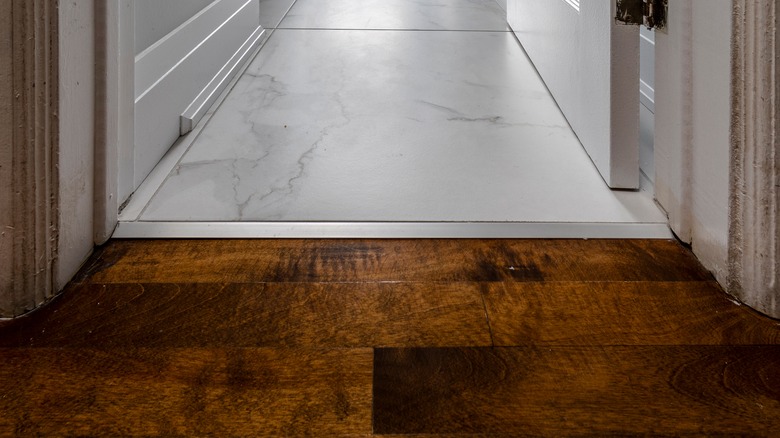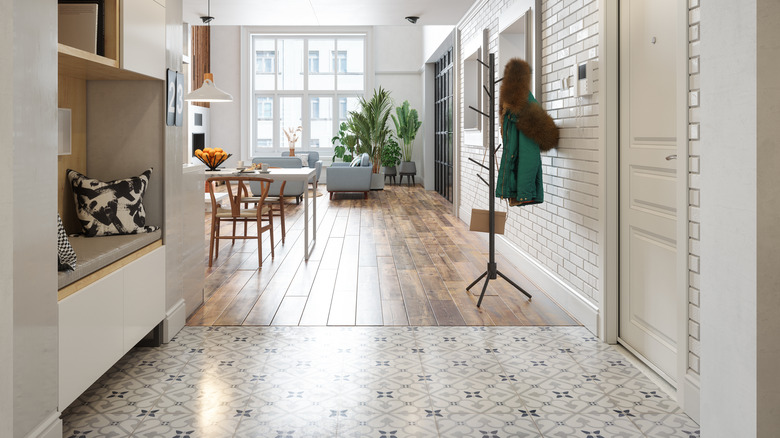Tips On How To Seamlessly Use Mismatched Flooring In Your House
Choosing mismatched flooring in your home should be carefully planned if you want the best results. Mixing materials can be a fun experiment, especially if it's your first time decorating your space. While there are many colors, finishes, textures, and styles to choose from, many homeowners opt to stick to the basics by having the same flooring throughout their homes. However, mismatched flooring can be used effectively to create an easy transition between rooms, giving them a different look and feel.
When choosing finishes, mix styles that complement each other instead of making your space look cluttered or overwhelmed. If you're redecorating, you'll want to consider other components, such as décor and furniture, to decide on the best flooring for each room. The style of flooring you pick impacts the room it's in, so it's vital to consider everything throughout the design process to ensure you create a cohesive space. Here's how to expertly use mismatched flooring in your home.
Transition flooring between rooms
The best way to pick a flooring style is by decorating one room at a time. Avoid using two materials in the same room as they tend to clash and overwhelm the space. Use the room's exits as your stopping point, so that you can pick a different flooring for the adjacent room. For example, if you install hardwood flooring in your living room, you might use tile for the kitchen.
On the other hand, every room in your home serves a purpose, and if the flooring doesn't meet a room's needs, then problems can arise. For example, a laundry room will hold a washer and dryer for you to do laundry, and the washer can sometimes leak water. If you want your floors to stay in good quality, avoid installing wood flooring that water can ruin. Instead, putting tile flooring in the laundry room would be best to mop up any leaks easily, and allows you to use transitional flooring in the next room. Another popular option is to install geometric tiles or herringbone wood flooring in the hallway leading to the living room.
Types of flooring styles
There are different ways to mix and match the flooring in your home, depending on the interior style you want or the ambiance you're striving for. Flooring can be separated into three categories: hard, soft, and tile. Hard surface flooring includes hardwood, linoleum, laminate, etc., while soft flooring includes carpet. Tile flooring can also be seen as a hard surface but often stands alone because there are different styles, such as porcelain, marble, terracotta, vinyl, etc.
You can mix and match the surfaces or mix within categories. For example, some homes will have open floor layouts where the living room, dining room, and kitchen are in one massive room. To break up the space, adding transitional flooring can help create a cohesive look with two flooring styles. You can have hardwood flooring in the living room and dining area and use large square tiles in the kitchen.
Hardwood and tile can sometimes make a space feel cold or mundane, so adding a rug or two can elevate the room to bring warmth and coziness. Moreover, if you decide to install carpet in your living room or bedroom, decorating with rugs can also break up a larger room into sections. Try to keep the carpet as neutral as possible to prevent adding wild designs that can be hard to decorate — instead, opt for an exciting patterned rug that you can swap out.


